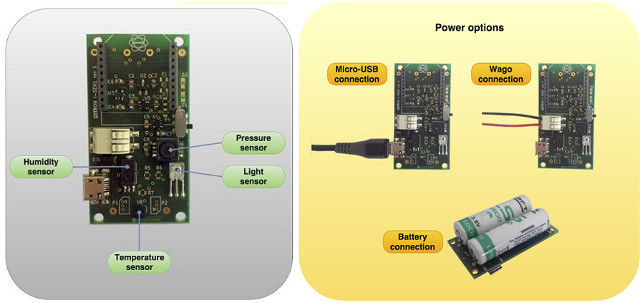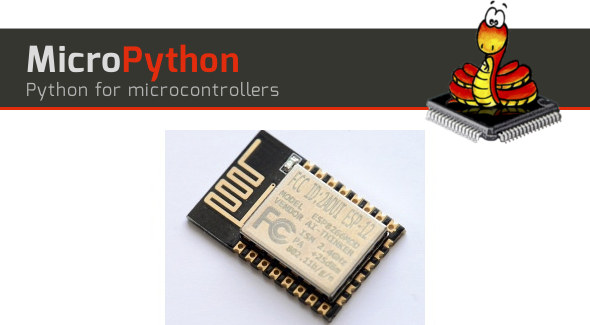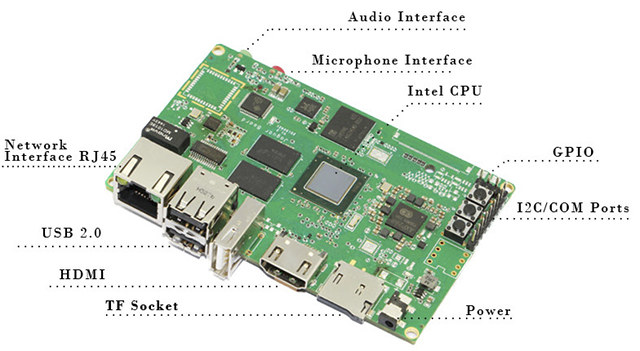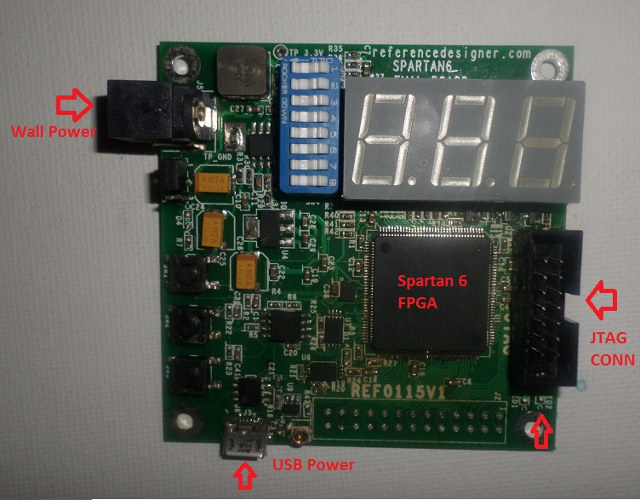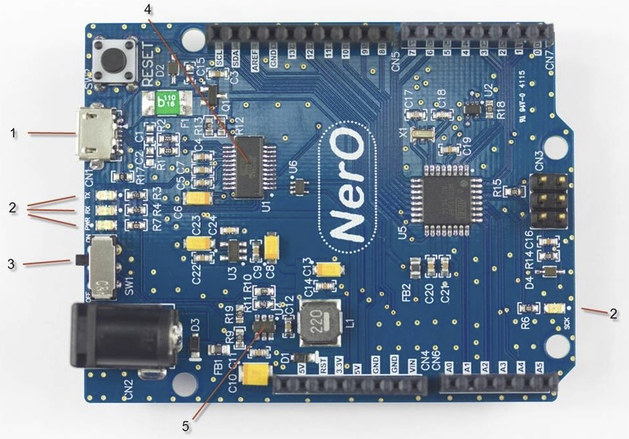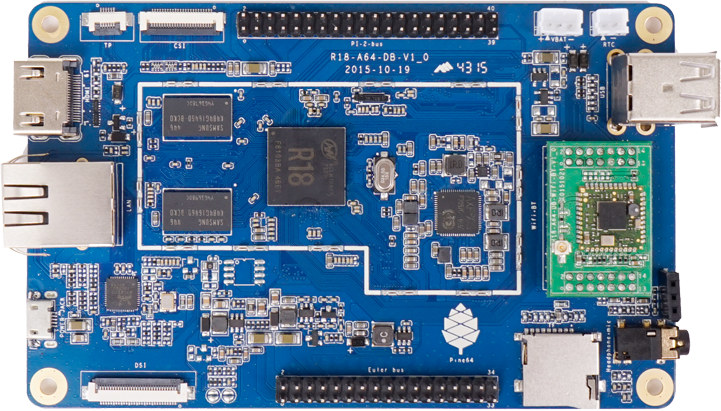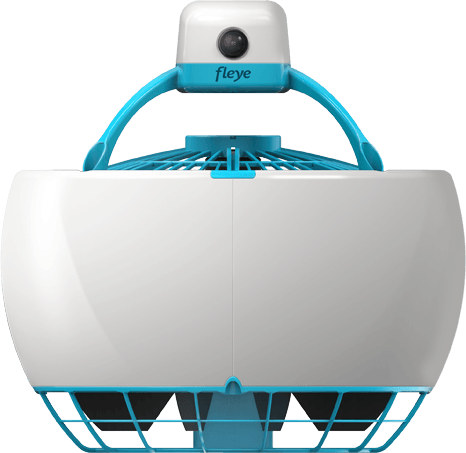Izitron, a start-up based in the South of France, has designed a board with temperature, pressure, humidity and light sensors and a XBee header to provide a way to monitoring environmental variables for weather monitoring, agriculture, industrial applications, and more. I-SEN1 technical specifications: Sensors Temperature – Microchip MCP9700-E/T0; accuracy: ±4°C Accuracy from 0°C to +70°C | -4°C/+6°C Accuracy from -40°C to +150°C; temperature range: -40 to 125 °C Pressure – Infineon KP236N6165; accuracy: 2%; pressure range: 60 kPa to 165 kPa; temperature range: -40 to 125 °C Humidity – Honeywell HIH-5030-001; accuracy: ±3% RH; range: 0 to 100% RH; temperature range: -40 to 85 °C Light – AMS TSL14S-LF; reponsivity: 16 mV/ (uW/cm2); temperature range: 0 to 70 °C Header for XBee RF module Power Supply 5V via micro USB 5 to 12V via Wago terminal block 2x batteries No power management chip Power on/off button Power consumption – Up […]
Bringing a Better Port of MicroPython to ESP8266 (Crowdfunding)
MicroPython is an lightweight implementation of Python 3 that runs on ARM Cortex-M micro-controllers such as STM32 or Texas Instruments CC3200, and since ESP8266 is so popular, work has started to port MicroPython on the Tensilica Xtensa LX106 based WiFi SoC. The current ESP8266 port comes with some API callss specific to ESP8266, but is quite basic, uses the execution model provided by Espressif, requiring callbacks to process WiFi requests, and doesn’t include support for many of the chip’s interface such as SPI, nor support WiFi fully. That’s why Damien George, the project lead, has launched a Kickstarter campaign to help fund development of the port, aiming to raise at least 6000 GBP (~$8,500 US). The goal is to develop “proper” Berkeley sockets for MicroPython on the ESP8266, in order to provide a true Python socket API to make development easier, optimize RAM usage, and implement the missing parts on […]
JaguarBoard is a $65 Single Board Computer Powered by Intel Atom Z3735G Processor (Crowdfunding)
While we have recently started to see low Intel Atom x5 “Cherry Trail” development boards such as UP Board and LattePanda, we have not really seen any Intel Atom Z3735F/G “Bay Trail” boards despite their popularity in mini PCs and TV sticks. JAGUAR ELECTRONIC H.K. aims to fill that avoid with their JaguarBoard single board computer powered by an Intel Atom Z3735G processor coupled with 16GB flash and 1GB RAM. JaguarBoard specifications: SoC – Intel Atom Z3735G quad core processor @ 1.33GHz / 1.83GHz (burst) with Intel HD graphics @ 311 MHz / 646 MHz System Memory – 1GB DDR3L RAM Storage – 16GB eMMC flash, 1x micro SD card slot up to 32GB Video Output – HDMI 1.4 @ up to 1080p Audio – HDMI, Line In and Line Out (stereo) 3.5mm jacks Connectivity – 10/100Mbps USB – 3x USB 2.0 Expansion Headers 8-pin header with 2x UART and I2C 4-pin […]
Spartixed is a $34 FPGA Board Based on Xilinx Spartan 6 (Crowdfunding)
Spartixed is another low cost FPGA board launched on Kickstarter, powered by Xilinx Spartan 6 LX4 FPGA, with a 7-segment display, some headers and buttons, and targeting people who want to learn VHDL/Verilog on the cheap. Spartixed board specifications: FPGA – Xilinx Spartan 6 LX4 FPGA (exact part not disclosed) Storage – 16 Mbit flash for program, I2C or SPI EEPROM Display – 3 digit 7- Segment Display USB – 1x micro USB port for power and debugging Expansion – 26-pin unpopulated header, optional SPI Bus A/D Converter Debugging – 14-pin JTAG connector, UARt port via USB connector Misc – 3x push button switches, 8 slide switches for input, 2x user LEDs, 1x power LED, 1x config. ready LED. Power – 5V via Micro USB Connector or 5 to 12 V via external power supply. Dimensions – N/A You can follow the project via its blog, and already access some […]
Is Console OS just a Scam Based on a Fork of Android-x86 with Little Modifications?
Console OS is supposed to be a version of Android Lollipop running on various Intel platforms, and optimized for desktop use with new features like DVR support for digital TV tuners, a desktop friendly file manager, and so on. The project launched on Kickstarter and was successful enough to raise $78,497 from 5,695 backers. But according to Chih-Wei Huang, Android-x86 project leader, and Console OS users, the Console OS developer simply forked Console OS, with some minor modifications like changing the project name, and under-delivering on the promised features. The first part is fine, as that’s the beauty of open source code, you can fork somebody else work, and add your own improvement, and long as you keep the license and credits, that’s what open source is all about. Now the project raised funds specifically for development, and as promised the source code is available on github. Here what has been […]
FTDI NerO is an Energy Efficient Arduino UNO Compatible Board That Can Handle Higher Loads (Crowdfunding)
FTDI found out that the original Arduino UNO R3 boards had issues handling higher loads with 9V and 12V power input being limited to about 800mA and 300mA respectively before the voltage of the 5V regulator drops, so they decided to make their own supporting up to 1A. NerO board specifications: MCU – Atmel ATMega328 MCU @ 16MHz with Optiboot bootloader I/Os 14 Digital I/O Pins including 6 PWM outputs 6 Analog Inputs USB – micro USB port for programming using FTDI FT231XS USB UART interface (4) Misc – Status and PWR LEDs, on/off switch Power Supply – 7V to 20V ( 9V or 12V recommended ) via power barrel or VIN pin. 5V switching regulator. Dimensions – UNO R3 form factor FCC/CE certified The board is manufactured in Europe by MikroElektronika, a company which I started the hear about more and more, especially since they’ve launched their mikroBUS standard […]
PINE A64 Development Board Kickstarter Campaign is Up
As previously announced, PINE64 $15 64-bit ARM Linux computer was due to launch on December 9, and the Kickstarter campaign is now up, and the shipping costs are $7 to the US, and $12 to the rest of the world. The name have changed to PINE A64 and PINE A64+ since the first announcement, but the specifications have mostly not changed for th two boards with an Allwinner quad core Cortex A53 processor, 512MB to 1GB RAM, a micro SD slot for storage, Gigabit Ethernet, HDMI 1.4, USB ports, and some other expansion headers for I/Os, displays or cameras. The PINE A64+ however now has an option for 2GB for $29, and we’ve got a bit more information about optional modules and accessories: Wireless module with WiFi and Bluetooth adapter Zwave adapter 7″ LCD touchpanel (PINE64+ only) Dry contact I/O board 5MP MIPI CSI camera Various sensors Various remote controls […]
Fleye is a Safe, Robust and Developer Friendly Drone Powered by NXP i.MX6 Processor (Crowdfunding)
In most cases, it’s a pretty bad idea to touch a drone while it’s flying, as you could potentially hurt yourself and others with the blades, so a startup based in Belgium has decided to design a safe drone with the blades hidden under a shell surrounded by protective grids, and with features such as obstacles avoidance. The design also makes the drone sturdier, and less prone to breakage should it fall or hit obstacles. The drone, dubbed Fleye, is based on NXP i.MX6 dual core processor, runs a Linux OS built with the Yocto Project, and the company also plans to provide APIs, and mobile SDKs to allow the developer community to experiment with the drone, and/or create mobile apps. Main hardware features of Fleye drone: SoC – Freescale NXP i.MX6 dual or quad core ARM Cortex A9 processor @ 800 MHz with Vivante GPU System Memory – 512 […]


